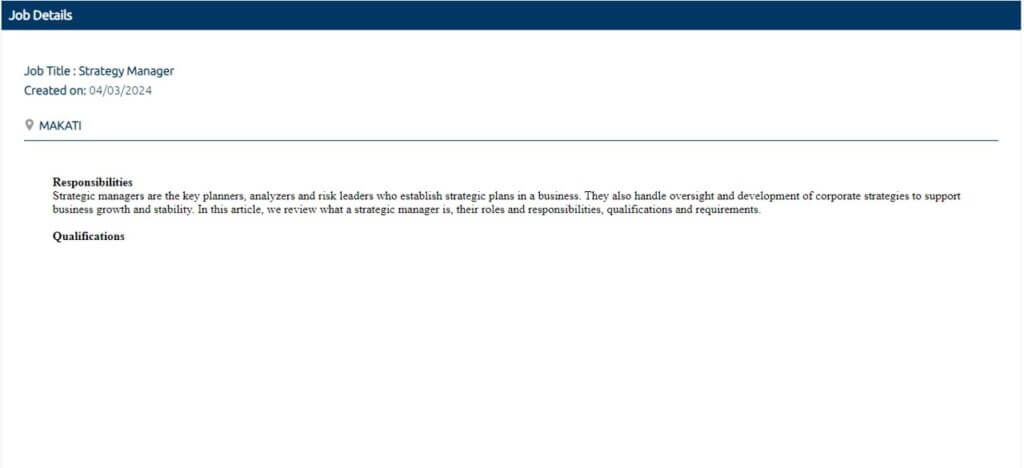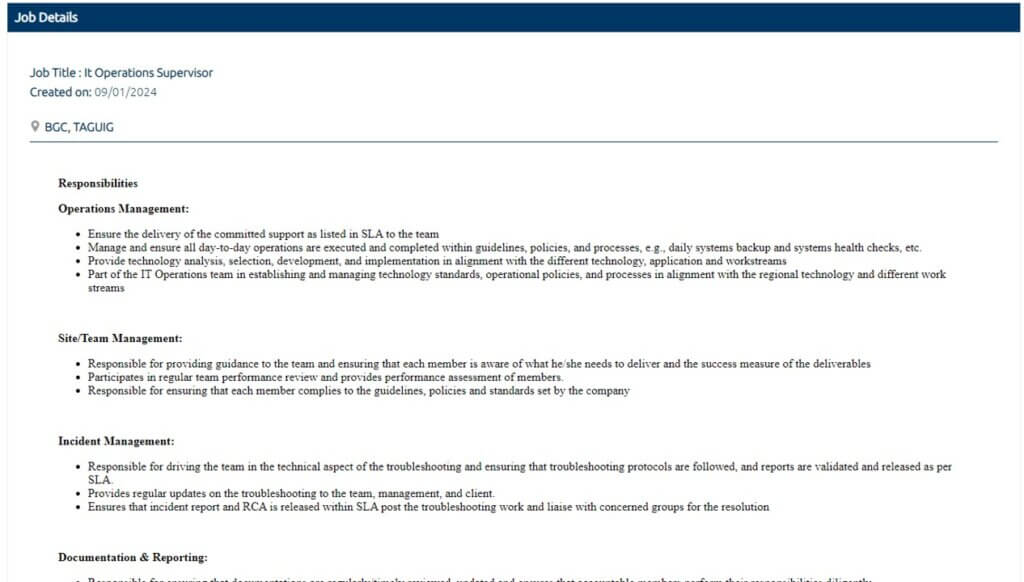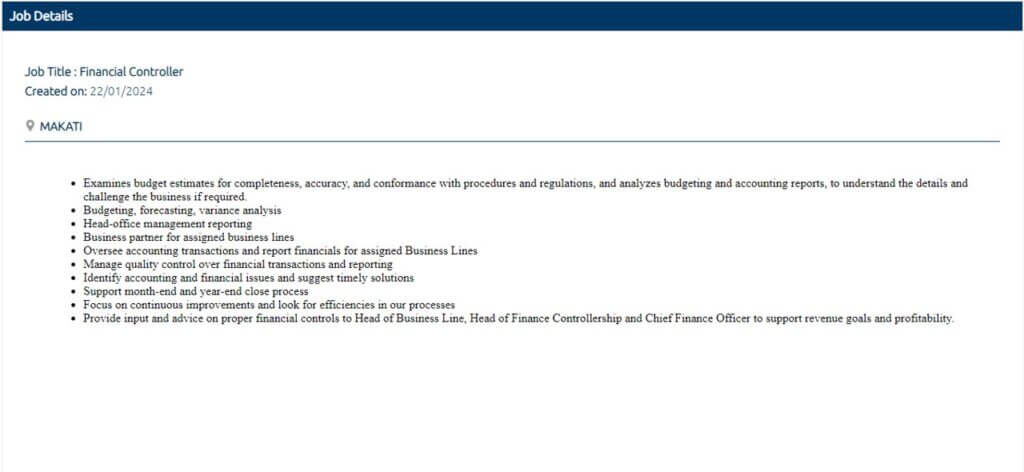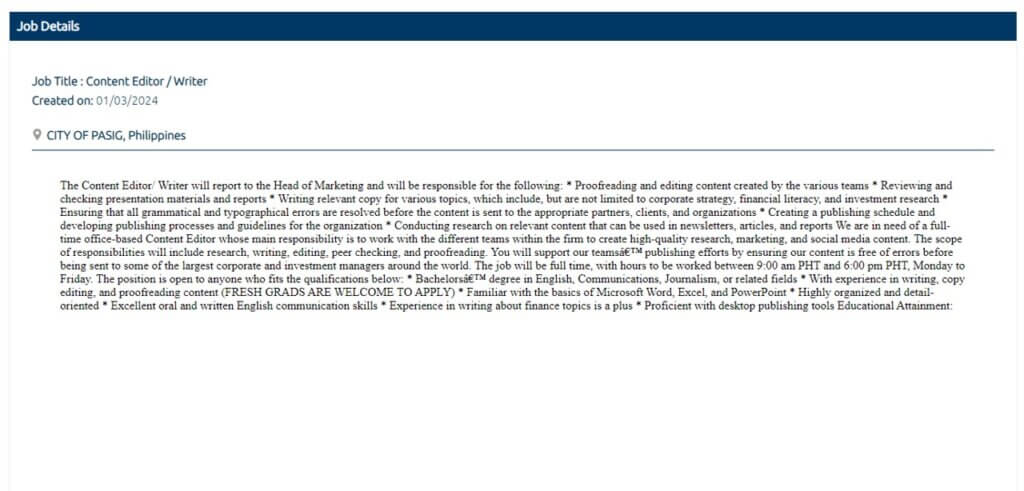What are your priorities as a recruitment specialist? Adopting modern tools and technologies? Meeting the hiring needs of your company? The screening process? All pretty good recruitment priorities to help you find the right talent for your company or client. But have you ever considered devoting more time to writing job descriptions?
A job description holds a lot more power than you think when it comes to talent acquisition. It’s not just outlining the requirements and demands of a position. The right job description attracts the right talent, providing sufficient information about what is necessary to qualify for the open position. The details also reveal whether your organization is appealing, reflecting the personality of your company. With a well-crafted job description, you can highlight the unique qualities of your business and leave a good first impression with highly qualified, experienced professionals.
What is a Job Description?
Job descriptions summarize and explain the essential requirements and responsibilities of an open position. It’s a written document that lists the skills necessary to meet the demands of a job, suggesting the metrics that potential employees must satisfy to perform well.
With well-written job descriptions or profiles, applicants gain a better understanding of the role: what sort of employee are you looking for, what does the role cover, and what are expectations in terms of productivity and success?
5 Common Mistakes Found in Job Descriptions
Sometimes, the best way to figure out how to do something right is to identify what’s wrong. If you’ve written plenty of job profiles, you’ll have racked up a substantial file to analyze. If you’re highly organized, you’re probably optimizing your hiring process through recruitment metrics. One of those metrics may even involve the success rate of certain job ads. If that’s the case, then you can compare which job profiles have yielded the best candidates and which ones have failed to entice good quality hires.
With job ads that have not attracted the right applicants, the following common mistakes are probably the reasons for poor recruitment results:
-
The job description lacks description

It’s called a “job description” for a reason. You might be thinking, “Well, I’ve already put in the job title, so that should give applicants a clue to what the role is going to be about.” The application process isn’t a scavenger hunt or a guessing game of sorts; applicants shouldn’t have to do detective work when going though job profiles.
Your job ad is competing against hundreds if not thousands of other job descriptions. If yours is vague and doesn’t provide sufficient information (like the job description sample here that stops at listing qualifications), it will be passed over. And you’ll miss out on attracting top talent.
-
The job description turns into a white paper

Some experienced professionals have caught on to the implication of a long job ad. Descriptions that cram too much information that it tells applicants they’re in for a heavy volume of work; that the open position reads like two people should be doing the work.
If it takes more than three or so scrolls to finish learning about the role, your description is too long. The best job ads are concise, providing just enough details to entice quality applications.
-
The salary range is left out
Transparency is a key indicator of good company. Part of practicing that is including a salary — or at the very least, a compensation range in your job profile. No law compels you to provide a salary information in a job ad, but it’s a helpful (sometimes compelling) reason to entice top applicants. Some job seekers prioritize a high paying job over responsibilities when applying to a company.
-
The job description has no personality

Yes, a job profile isn’t about the company. But it must convey some kind of branding to differentiate your organization from all the other businesses with the same open position. Your job description can reveal relevant aspects about your company, from its values to its culture. Job ads that simply provide a bulleted list of the role’s responsibilities is devoid of any personality and may fail to attract creative, experienced applicants.
-
It’s not readable

Few things make job descriptions unreadable: jargon, be it company- or industry-specific; bad grammar, and proofreading errors. One of the easiest elements that makes a job profile hard to read is the absence of a format.
In the job description example above, no care has been taken to communicate the requirements and responsibilities. No applicant will spend time attempting to understand an open role without spacing and bullet points. The big, messy, block of text is an invitation to pass over the job ad.
How to Make an Effective Job Description
When writing a job description, always include the following components:
- A clear job title
- Summary of the role (or why the job exists)
- Responsibilities and essential functions of the job
- Required qualifications (education, experience, and necessary skills)
- Company’s basic information (if it’s at the top of its industry, include that detail)
The job descriptions you write are a snapshot of your organization. The words you choose and the tone you set offer up a representation of what your company values and gives a glimpse of your culture. It is a marketing tool that becomes an opportunity to give a good first impression.
To write job descriptions that get quality applicants, follow these tips:
- Be inclusive by not using gender-based language. Avoid using “he will support the team” or “she ensures delivery.” Instead of “he” or “she,” use “they.”
- Lead with what’s most important about the open position. Applicants tend to scan job ads, so make sure your description immediately gives them the information they need. A catchy but brief introduction about the job and company, giving applicants a clear idea of the role and organization.
- Cast a wide net. Use positive language that appeals to more people. Try not to use “strictly,” “never,” or “must.” These words tend to have a negative effect, limiting your options for applicants.
- Use simpler words, keeping your structure easy to understand. Don’t use terminologies known only to your organization. Be concise with your description, without omitting essential details.
- Use present tense verbs (or action-oriented words) because they mean the duties assigned are current, and that it’s an updated description.
- Be clear about the job condition. Do you need applicants who can work on a hybrid arrangement? Is the job exclusively remote, with the company providing equipment? Are employees required to work on weekends and holidays? Again, transparency is a key factor for applicants.
- Use a voice that reflects your company culture. A company providing creative services will have a more lighthearted and engaging description looking for a graphic designer than a finance company seeking a web designer.
Job profiles or descriptions are more than just a list of duties and qualifications required. It’s the first step toward finding the right people who will help your company become successful in its industry. Write an effective one, and your recruitment process will secure good hires.
John Clements Consultants provides services designed for the changing needs of our clients and candidates. Learn more about our solutions.




